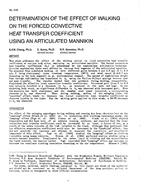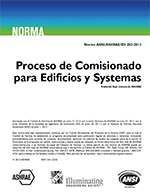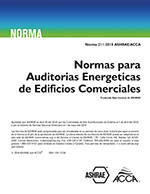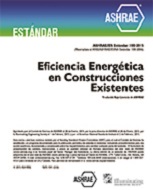Description
This study addresses the effect of the walking motion on local convective heat transfer coefficient at various body sites, employing an articulated mannikin. The forced convective heat transfer coefficient (hc) is determined by the naphthalene sublimation technique. Circular naphthalene disks were affixed to various body segments of the articulated mannikin. The mannikin then simulated walking at five different gaits between 0 and 2.0 mph (0 to 0.9 m/s, 0 being stationary) under constant temperature (30°C) and wind speed (0.4~0.7 m/s depending on the body segment) in an environmental chamber. The amount of naphthalene weight loss through sublimatlon was translated to hc using the Chilton-Colburn analogy between heat and mass transfer. The results showed that arm movement during walking, unexpectedly, diminished the effective local convective transfer coefficient. Increased gait (from 0 to 2.0 mph) actually resulted in a decrease in hc, as measured on the arms and legs. On the nonmoving body trunk, no significant difference in hc was observed with increased gait. When the mannikin was held stationary and the chamber wind speed increased, a corresponding increase in hc was observed. Thus, during walking, motion of the swinging limbs, the “pendulum” effect, tends to decrease the forced convective heat transfer coefficient as observed locally on the limbs. For the walking gaits applied in this study, a 5%~7% decrease in hc was observed.
Units: Dual
Citation: ASHRAE Transactions, 1988, vol. 94, pt. 1, Dallas, TX
Product Details
- Published:
- 1988
- Number of Pages:
- 12
- File Size:
- 1 file , 900 KB
- Product Code(s):
- D-DA-88-3116




